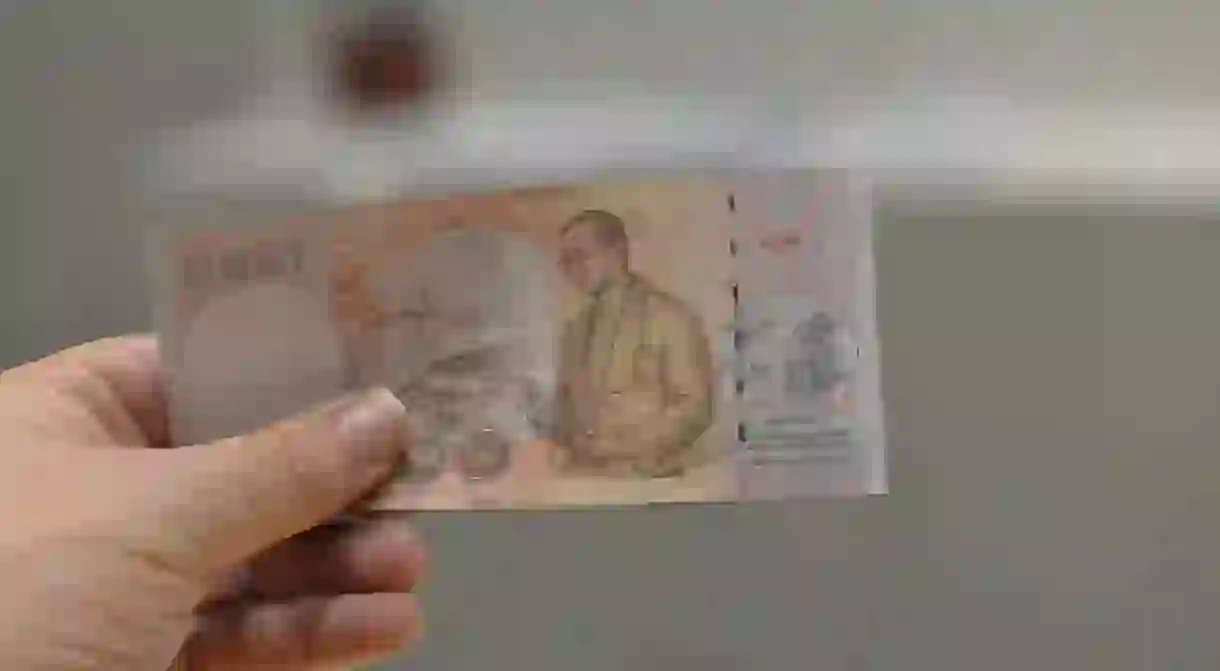THB: Explaining Baht, Thailand's Currency

Whilst other Southeast Asian nations may use American dollars alongside their local currencies, that isn’t the case in Thailand. Here, the Thai Baht is king, and here’s what you need to know about it.
A brief history

Like many other previous currencies, before it was a form of currency the baht was a measurement of weight, which later became a currency value that corresponded to the weight of silver. The term “baht” is thought to have been in use as far back as the Sukhothai kingdom, which ended in the 15th century. In 1897, Thailand’s currency system switched to a decimal one, which saw one baht as the equivalent of 100 satang. The value of the baht remained fixed only to the value of silver into the early 20th century, but later began to be pegged to leading currencies such as the pound sterling in Britain and the dollar in the USA.
The value of the Thai baht to the dollar fluctuated throughout the 20th century thanks to the strengthening of the US economy, but saw its value plummet as a result of the 1997 Asian financial crisis. The crisis, which came to be known as the Tom Yum Goong crisis after the popular Thai dish, saw the baht float, which led to its worth falling from 25 baht to the dollar to a lowly 56 baht to the dollar.
Thai Baht today

Today, the Thai baht has recovered well from the crisis in 1997 and is performing strongly in the current climate. The USD exchange rate is a healthy 31 baht for every dollar, recently hitting a four-year high against it. Thailand has fiercely denied criticisms from the US that it has manipulated its currency, as it continues to rise in value. The baht remains the only usable currency in Thailand, unlike its neighbouring states Cambodia, Laos and Vietnam, in which it’s possible to use the dollar too.
Notes

The Thai baht is available in a variety of different banknotes — 20, 50, 100, 500 and 1000. Their colours are green, blue, red, purple and brown, respectively, and they are solely printed on special paper made from cotton fibre, not plastic. Today’s notes feature a portrait of the late King Bhumibol Adulyadej on the obverse side, whilst the reverse sides feature a series of images associated with Thailand’s history. These range from former kings, such as King Naresuan atop his elephant on the 50 baht note, to moments, such as the abolition of slavery as depicted on the 1000 baht note, as well as famous buildings.
What will your money get you?

THB20
A 20 will see you pick up a couple of snacks at a night market, a bus ride around Bangkok or a soft drink at a convenience store. You’ll also have you pick of popular Mama cup noodles and even water to boil to go along with it.
THB50
With a 50, it’s easily possible to feed yourself a dish at a local Thai restaurant or with some pad Thai at a night market, though you might still be peckish afterwards. It’s also good for a bottle of beer from a convenience store, and you’ll get change if you want coffee from 7-Eleven.
THB100
A hundred can see you well-fed at a night market, or splashing out to include a beer with your meal at a local joint. It’s also good for a coffee at a Western-orientated coffee shop in a tourist town, or to buy eggs and bread to make brunch for yourself. You’ll also be good for any public transport and a short-distance taxi ride, provided they put the meter on.
THB500
Five hundred will more than get you a bed in a hostel anywhere in Thailand. It’ll also see you able to afford a two-course meal and a beer at a Western restaurant, or buy all the necessary ingredients to make fajitas back home. Good for a lot lot of groceries — eggs, milk, bread, meat, veggies — and then some. You’ll also be able to afford most ferry journeys to Thailand’s islands, and you’ll have enough for a cinema ticket with a large popcorn and drink.
THB1000
If you’re in possession of Thailand’s highest banknote, you’ll probably be able to find an air-conditioned bungalow on an island, and you’ll comfortably be able to afford your meals and transport for the day as well as a few drinks in the evening without having to cheap out or count your pennies.
Tips for splashing your cash

Feeling guilty about using a 1000 baht note at a local market? Simple — head to 7-Eleven. Whilst local market vendors may not have change or may take time whilst they trudge off to find it, 7-Eleven has tonnes of it, so break a thousand by making a small purchase like a bottle of water. Let’s face it, you’ve probably not been drinking enough anyway.
The last year or so has seen several news stories about fake Thai baht being used in tourist hotspots. Don’t be afraid to check the authenticity of the banknotes; if they don’t feel right, don’t have a hologram or security strip, or don’t have the picture of the late king as a watermark, don’t accept them. The full list of security features can be found here.
Finally, because Thai baht has pictures of the beloved late King Bhumibol, remember to treat it with respect. Dropping coins or notes is a big no-no here, and so is stepping on it to ensure it doesn’t fly away. Treat it carefully, and you avoid any dirty looks.













